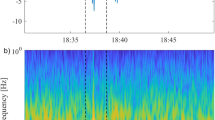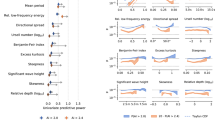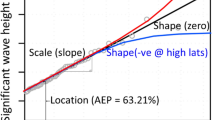Abstract
THE behaviour of secondary waves riding on the larger primary ones does not seem to have been taken into account in the theory of wind–formed sea waves. From the geometry of trochoids, surface water particles at the troughs on either side of the crest of a secondary wave will close up when this wave is riding on the crest of a primary one, and open out at its trough. The energy of the secondary wave will squeeze up and disperse accordingly; and height, and so steepness, will be affected not only on that account, but also because the relationship of height to energy will change owing to the vertical acceleration of the water caused by the primary wave.
This is a preview of subscription content, access via your institution
Access options
Subscribe to this journal
Receive 51 print issues and online access
$199.00 per year
only $3.90 per issue
Buy this article
- Purchase on SpringerLink
- Instant access to full article PDF
Prices may be subject to local taxes which are calculated during checkout
Similar content being viewed by others
References
Phil. May., (6) 23, 1055 (1913).
Gaillard, "Wave Action in relation to Engineering Structures",p. 120.
Author information
Authors and Affiliations
Rights and permissions
About this article
Cite this article
UNNA, P. “White Horses”. Nature 148, 226–227 (1941). https://doi.org/10.1038/148226b0
Issue date:
DOI: https://doi.org/10.1038/148226b0
This article is cited by
-
Weak or strong nonlinearity: the vital issue
Journal of Engineering Mathematics (2007)
-
SEA WAVES
Nature (1947)
-
Waves and Tidal Streams
Nature (1942)



